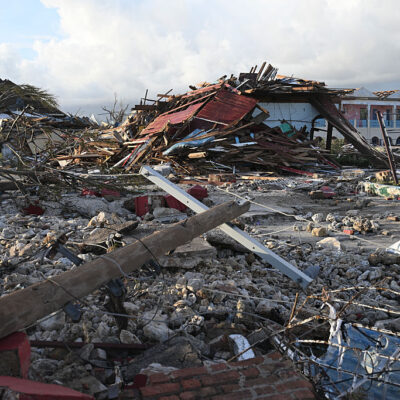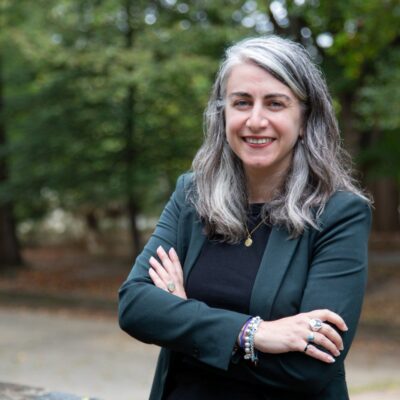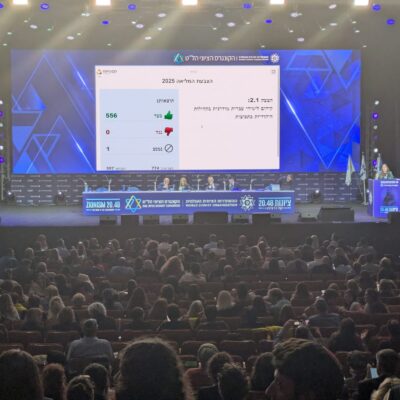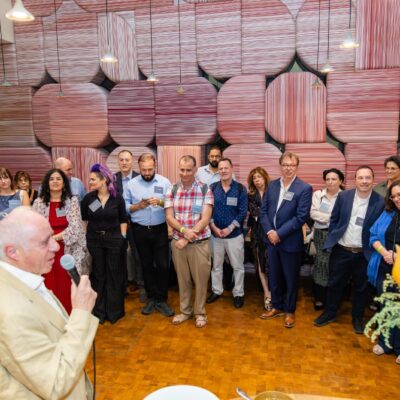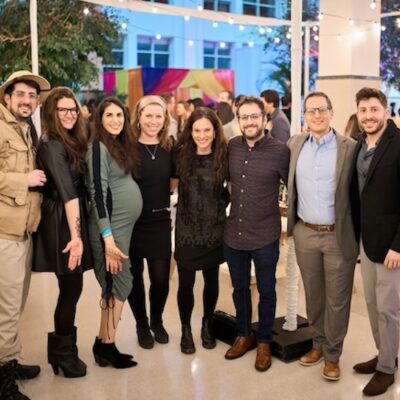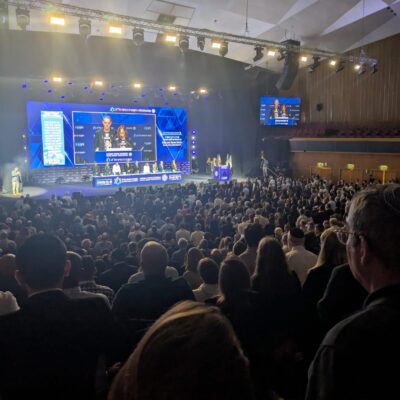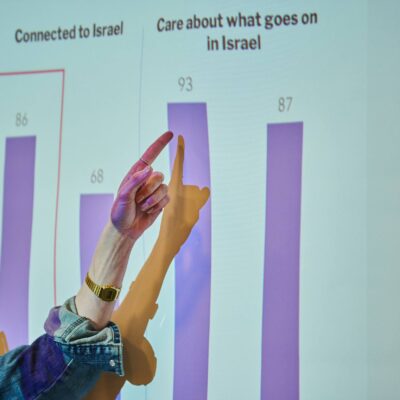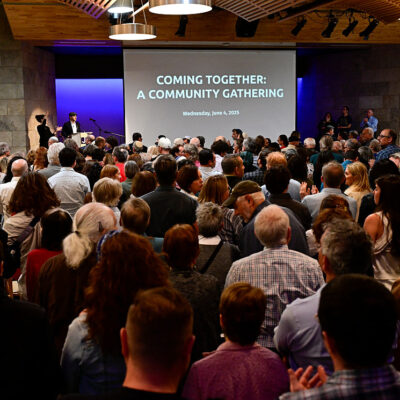LET MY PEOPLE KNOW
Blavatnik Family Foundation spearheads archive to shed light on history of the Refuseniks and Save Soviet Jewry movement
For the philanthropic family, which fled the USSR in 1978-1979, the topic is a personal matter, but Alex Blavatnik tells eJP that he hopes the story resonates further

Peter Keegan/Keystone/Hulton Archive/Getty Images
A section of New York's Jewish community carrying a banner reading 'Free Soviet Jews' during the Solidarity Sunday for Soviet Jewry demonstration in protest at the Soviet Union's treatment of Jewish people, in New York City, on April 13, 1975.
Perhaps the last time that the entire Jewish community came together as one was during the height of the Cold War, when Jews from around the world called on the Soviet Union to “Let my people go!”
While this past year has similarly seen a largely united Jewish people, the effort to rescue Soviet Jewry was truly a catholic endeavor: religious and secular, young and old, left-wing and right-wing, Israelis and Diaspora Jews all working together, dedicated to the same fundamental cause — getting the Jews who wanted to leave the Soviet Union out — with maybe only some differences about where they should then go (Israel or elsewhere).
The Soviet Jewry movement included public demonstrations, political lobbying and discrete diplomacy; it went on for decades, starting in the 1960s and culminating with the fall of the Soviet Union in the early 1990s. Until last year, the largest Jewish protest in U.S. history was the Dec. 6, 1987, Freedom Sunday for Soviet Jews rally on the National Mall.
And yet this history has largely been forgotten.
The Blavatnik Family Foundation, joined by the Arcadia Fund and the David Berg Foundation, is working to change that, funding a new digital archive — Refuseniks & Activists — that is dedicated to the Soviet Jewry movement and the Refuseniks, those Soviet Jews whose applications for exit visas were refused and who were then forced into horrid conditions for the sins of being Jewish and Zionist.
For the Blavatniks, the matter is personal.
“Our family came to the States in 1979… and we were direct benefits of this effort. It was quite an effort. It didn’t happen by itself,” Alex Blavatnik told eJewishPhilanthropy.
“There was an effort for many years that took place in the U.S. at all levels — political, religious… — and there were just a lot of people involved that took it upon themselves to get the Soviet Jews out, people like us,” he said. “I had no idea there was something going on outside to allow us to get out of the Soviet Union and come to the States. But there was a huge effort… There were various Jewish organizations helping us… And even when we arrived in New York, the local Jewish organization supported us until my parents found jobs.”

Blavatnik, who serves as chairman of Access Industries, the conglomerate founded by his brother, Leonard, said that even with his personal experience, he is still learning about the multinational efforts to get his family — and many others — out of the Soviet Union.
“It’s of interest to me to learn how it all happened, because I really don’t have a clear idea what was really going on behind the scenes and all the efforts that took place here [in the United States] and generally outside of the Soviet Union,” he said.
The topic is also personal for Julie Chervinsky, the director of the Blavatnik Archive, whose family was refused exit visas for four years before they could emigrate in 1976.
The Blavatnik Archive team came up with the idea for the Refuseniks project, recognizing that the collections about this period in history were scattered among many institutions around the world, she told eJP.
The new archive includes the collections of Refuseniks Natan Sharansky and Alexander Smukler, the latter of which includes a number of self-published magazines — known as samizdat — for the Soviet Jewish community; the records of the National Conference on Soviet Jewry and the Greater New York Conference on Soviet Jewry, recordings of the American Jewish Committee’s “Russia Reports” radio broadcasts, as well as an oral history project featuring dozens of testimonies from Refuseniks and activists.
According to the organization, the team saw the opportunity to bring all of these various documents and databases under one roof, allowing for new scholarship on the topic.
“This is a long-term evolution of the Blavatnik Archive with the ideas of what we’ve always been drawn to, historical events or medium types that are not necessarily captured by other institutions. And so we’ve created this incredible digital infrastructure to really allow scholarships to go deep into material,” Chervinsky said.
“We recognized that the story of Refuseniks activists has not been put together anywhere. We know that there are amazing holdings at different institutions,” she said. “We decided to go out, talk to these institutions and see if they would like to come together.”
The Blavatnik Archives’ main partners in the project are the Center for Jewish History, the American Jewish Historical Society, the National Library of Israel, the Central Archives for the History of the Jewish People, and the Wende Museum, a Culver City, Calif.-based institution focused on the Cold War, Chervinsky said.
“This is a long-term initiative. This is not something that’s going to end in the next year or two. We’re talking already to other institutions to come and share their holdings,” she said.
The Blavatnik Family Foundation declined to disclose the precise budget for the project, but said that it is a seven-figure sum. “[The foundation] has invested significantly to help the Blavatnik Archive develop the technology and capacity to initiate this project,” a spokesperson said. “In addition to BFF, Arcadia Trust and David Berg Foundation have joined in supporting this initiative.”
The archive has already commissioned a number of scholars in the field to write articles about some of the documents in the archive, and Chervinsky said the plan is to open fellowships to encourage further research and scholarship.
“We’ve already started conversations with Brandeis and with other institutions about how they could use this material. We would not build curriculum — we’re not educators ourselves — so we’re having those conversations about how it could be engaged,” she said.
Beyond academia, the project will also seek to introduce the topic of Refuseniks into more public fora, with talks and museum exhibits.
Blavatnik added that elevating these stories was important for the younger generations to understand their own history.
“My parents were fired from their work for being traitors to the ‘great revolutionary cause,’ and I was put on the spot — I think I was in eighth grade — and the principal of the school even offered to let me leave my family — because I was obviously being taken by force by my parents to this evil place like America— and they offered to adopt me. It was quite an ordeal,” Blavatnik said.
“My kids don’t really have any understanding of what we went through, and I don’t blame them because they don’t have any point of reference. But if I could introduce them in an easy way to say, ‘Look, this is the story of people like me, our family,’ I think that would be helpful,” he said.

 Add EJP on Google
Add EJP on Google